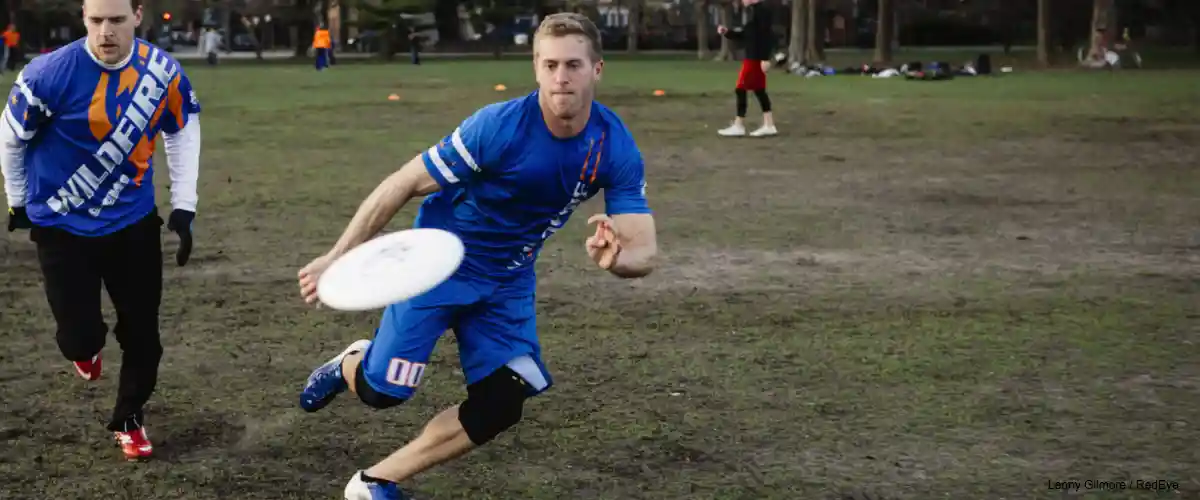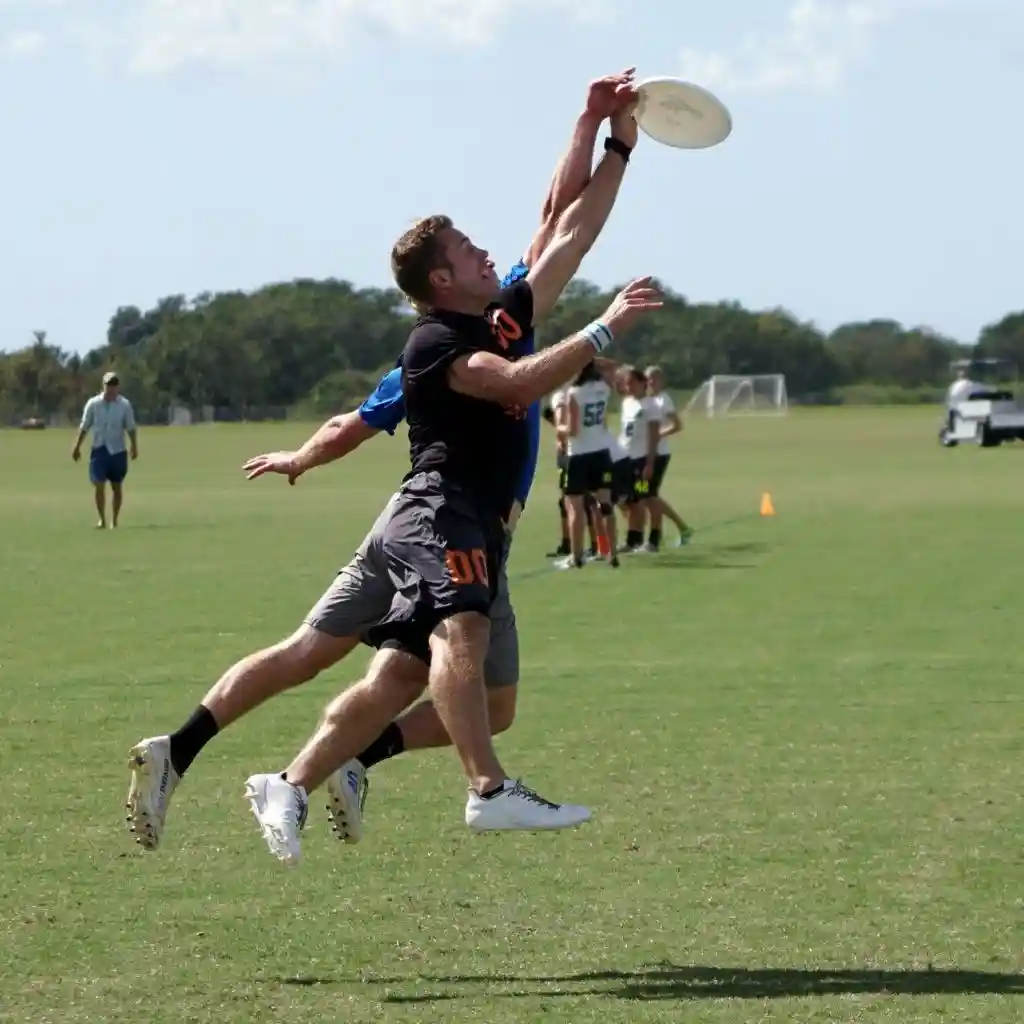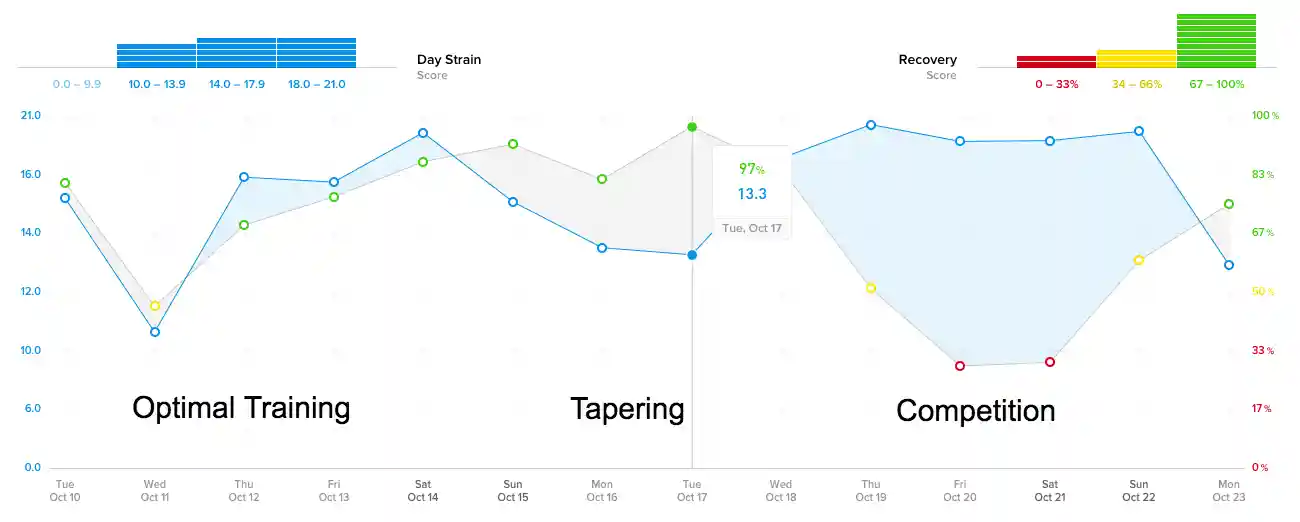Topics
- Article
The 'Ultimate' Training Tool

Jonathan “Goose” Helton first discovered the sport of Ultimate in high school, while playing with his church youth group. “At the time, I didn’t even particularly like it,” he confessed. Who would’ve thought a decade later he’d be named Most Valuable Player of the American Ultimate Disc League (AUDL)?
The AUDL consists of 24 pro teams throughout the United States and Canada, and features some of the most amazing highlights and spectacular feats of athleticism you’ll see in any sport. “There was a time In my life when I was very particular that people call it ‘Ultimate’ and not ‘Ultimate Frisbee,’” Helton said. “‘Frisbee’ is actually a trademark name by the company Wham-O. But I think once you reach a certain level of playing, you don’t really care anymore and become OK with people casually saying ‘Ultimate Frisbee.’”
For the 33-year-old Helton, working as a financial advisor is his “primary way of eating and paying rent.” However, playing Ultimate professionally and being a strength and conditioning coach is what drives him. “Since Ultimate is such a new sport, there have never really been good training programs available that are specific to it,” he explained. Helton aims to provide younger players with a functional performance training platform that gives them tools to succeed that didn’t exist when he first took up the game.
A seasoned veteran who’s played in the AUDL since its inception in 2012, Helton got serious about Ultimate while attending Wheaton College in 2003:
“I was playing a lot of pickup and I heard about a group of people called ‘The Cult.’ They would run drills–I mean, who does that for frisbee? I joined the team and realized for the first time that there were official rules and strategies to the game. That was when I was 19. From there, I gradually grew to love it more and more. When I went to my first tournament, I was hooked. I remember coming home afterwards and thinking ‘That was the most amazing weekend of my life!’”
Helton recalls a time when he was 16 years old and his father made a character joke about him not being consistent with anything. “I decided from then on I’d be consistent with working out, and I was,” he said. “When I got competitive with Ultimate in college, I used a lot of football and soccer workouts for basic agility and explosiveness. I did anything I saw, all sorts of random exercises I thought might improve my game.”
In 2010, Helton met Tim Morrill, a trainer and fellow Ultimate player. “Tim trained two of my friends, and they each gained six inches to their vertical leap,” Helton said. “I’d never seen anything like it. He’d figured out how to apply his training knowledge to frisbee. I brought him to Chicago where I lived to work with the club team I was playing with. That was a paradigm shift for me. Tim changed the way I did warm-ups, the agility patterns I worked on, and how I spent my time at the gym. That’s what put me in position to win the AUDL MVP in 2012 and 2013.”
Helton’s player profile from the league website states “His training program is designed to help him stay as physically dominant for as long as possible.” He’s been a certified functional strength coach for the past three years, and Morrill is now his business partner. “I started studying under a bunch of different coaches and reading a ton of books,” Helton said. “In particular, I’ve been heavily influenced by Cal Dietz’s Triphasic Training and Mike Boyle’s Functional Training for Sports. A lot of the stuff we do is unilateral to try to restore symmetry within the body because we play a very asymmetrical sport. Running fast was never my problem, slowing down was.”

This past spring, Helton added a new component to his training–WHOOP:
“I learned about WHOOP in April from another strength and conditioning coach who also plays Ultimate. He called it a ‘game-changer,’ and he’s not somebody who throws that term around loosely. I asked him a ton of questions and the thing that impressed me the most was the Recovery algorithm. You never really know how the way you feel compares to what your body is actually prepared to do physically. That was something I wanted to get right. If I feel run down and fatigued, is it because I’m a wuss, or because my body needs to take a break?”
“When I began wearing WHOOP, the first thing I realized was how much it helps me moderate my training,” Helton added. “I wish I’d had it a year-and-a-half ago when I was training for Team USA. I was working like a dog, lifting three days a week for a couple hours, doing agility and speed work with conditioning on my ‘off day’–every day I was doing something. There were days I felt crushed and I just pushed through them. WHOOP data could’ve helped me avoid overtraining during the most intense period of my life.”
Here’s a two-week glimpse at Helton’s daily Strain (blue) and Recovery (green/yellow/red) as he prepared for last month’s USA Ultimate National Championships:

Through the first half of October, he did an exceptional job maximizing his training by mirroring his Strain and Recovery–he took on workloads that his body was equipped to handle. As the tournament approached, Helton reduced his Strain each day in order to boost his Recovery and prepare himself for the grueling four-day event. His Recovery peaked at 97% just before the national championships began, indicating his readiness to perform at an optimal level. You can then see the Strain he accumulated from playing three intense games per day, and the corresponding effect it had on his Recoveries.
@whoop – for reference. pic.twitter.com/tc2YIYkhsl
— Jonathan Helton (@Goose00Helton) October 25, 2017
“Me and some other guys using WHOOP like to compare our Strains on tournament days,” Helton said. “Unfortunately, somebody else always beats me. I’ve transitioned to more of an offensive player in my later years and it’s the defensive guys who tend to push their aerobic threshold just a little bit further.”
Helton sees WHOOP playing a key role in helping to extend his career as long as possible. “As you age, you start to recover less quickly,” he noted. “The thing WHOOP does really well for me is it brings objectivity to my subjective feelings about my preparedness to train. I’m still pushing pretty hard and I want to keep training really hard, but now I have peace of mind about taking low-intensity days when WHOOP tells me to. I know I’m doing what I need to be doing and I don’t feel like I’m leaving something out on the table.”
The AUDL kicks of it’s seventh season next April. Armed with WHOOP data and a masterful training program, Helton expects to continue playing at an elite level in 2018.